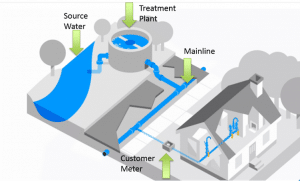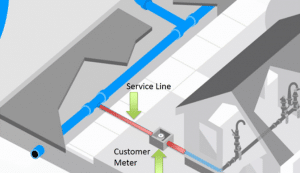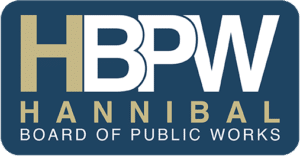For many years, the Hannibal Board of Public Works (HBPW) has continued to work hard to eliminate the threat of lead from customers’ drinking water supply. A metal used for most of the 20th century in everything from paint and gasoline to plumbing pipes and fixtures, lead has been linked to several serious health ailments. Because it can accumulate in the body, infants, children and developing fetuses are particularly susceptible to the effects of lead exposure. Due to part of these reasons, the Biden-Harris Administration has recently approved the Bipartisan Infrastructure Law. The President has created an agenda that begins with providing $55 billion in direct funding from the Bipartisan Infrastructure Law to have all lead service lines replaced through the Drinking Water State Revolving Fund. Guidance pertaining to this updated legislation has not been released, but officials say in the first quarter of 2022, guidance will be provided to cover implementation issues such as eligibility and application requirements.
Due to our diligence to eliminate the threat of lead from drinking water, we have and will remain in compliance with regulations set forth from the Missouri Department of Natural Resources (MDNR) and the Environmental Protection Agency (EPA). The water leaving our water treatment plant and traveling through water mains is almost always free of lead. However, lead is sometimes present in pipes connecting some older homes to the water system. This modernized legislation is a step forward in taking preventive measures to protect families all over the world by removing sources of lead from pipes and plumbing. As your local water utility, being proactive is our number one priority in continuing to provide our customers with water services that meet and/or exceed all Federal and State regulations.
How can lead get into the drinking water?
Water from the Mississippi River flows into the treatment plant, then through a series of pipes before it gets to your home or place of business. Hannibal’s water does not contain lead above 1 part per billion.


If there is no lead in the water, then where can it come from?
The water leaving the treatment plant and traveling through the water system is almost always free of lead. However, lead can be present in the pipes connecting some older home to the water system. Water Service lines can be made from lead pipe or contain lead solder joints. They can be from the mainline to the meter and/or from the meter to the house.
How can you keep your drinking water safe at home?
- Replace service lines and plumbing that contain lead within your home and service line
- Consult with a plumber to inspect your homes pipe material/condition
- Use a filter—Several types of inexpensive household water filters are effective at removing lead. These additional systems need to be properly maintained according to the manufacturer to ensure proper operation and filtration.
- Run the tap before use—Lead levels are likely the highest when water has been sitting stagnant in your pipes for several hours. Clear this water from your pipes by running the cold-water faucet for several minutes.
- Clean aerators—Aerators are small attachments at the tips of faucets which regulate the flow of water. Overtime, they can accumulate tiny particles of lead in their screens, eventually contaminating the water.
Additional Resources:

